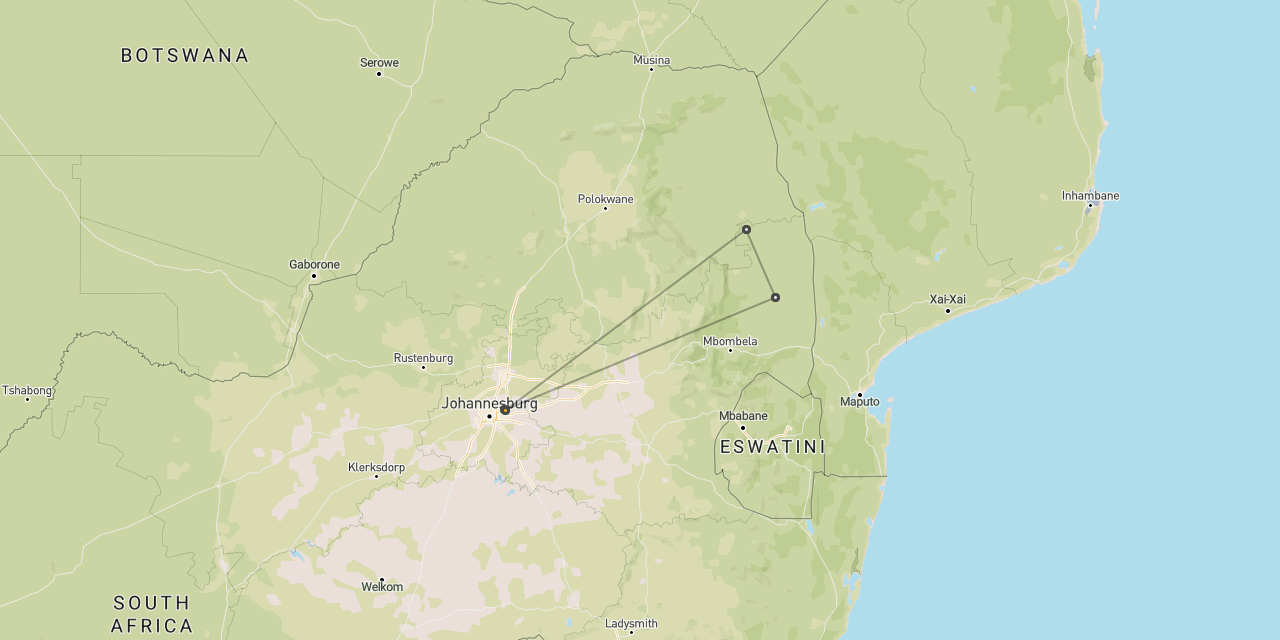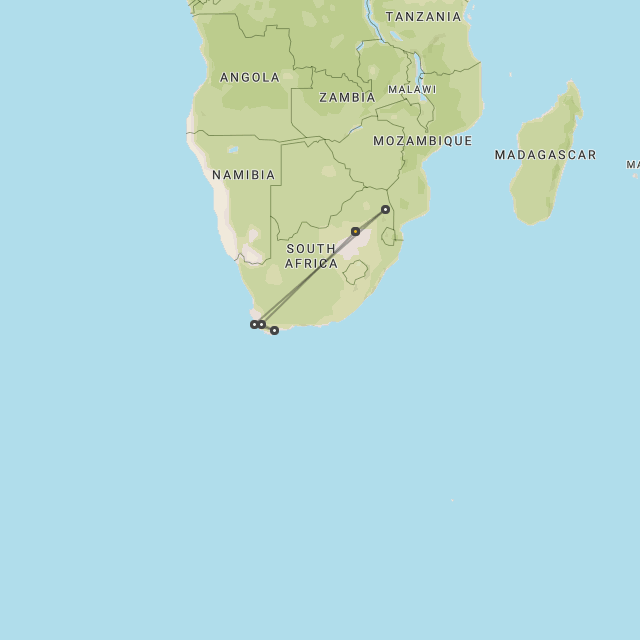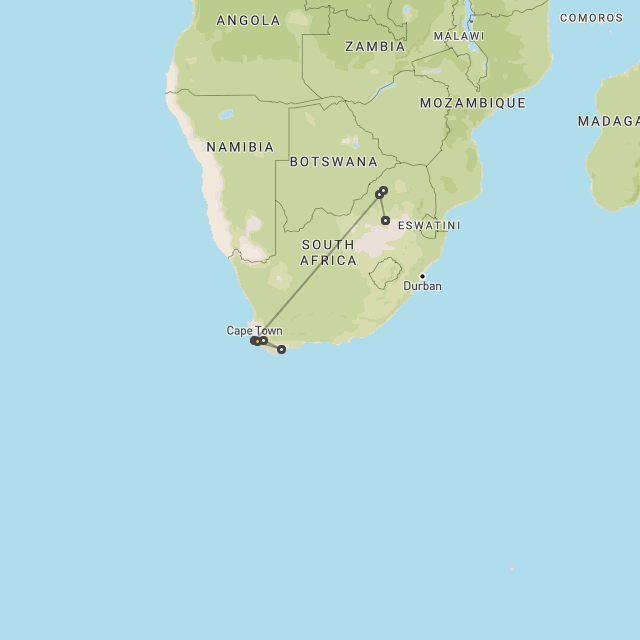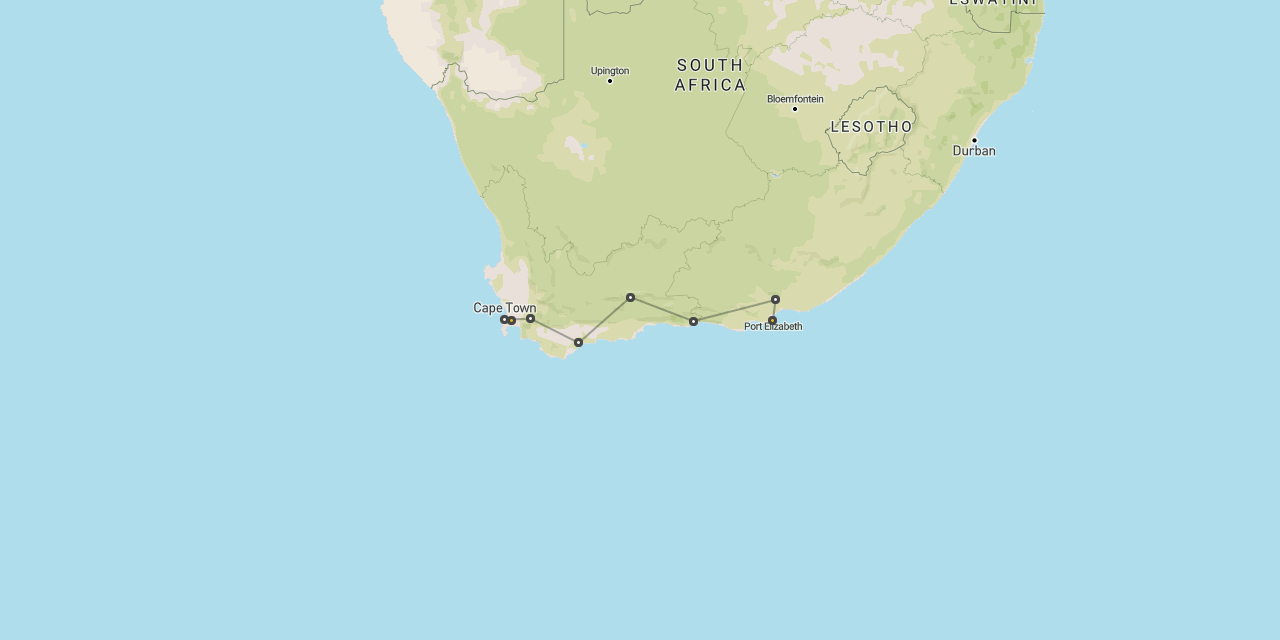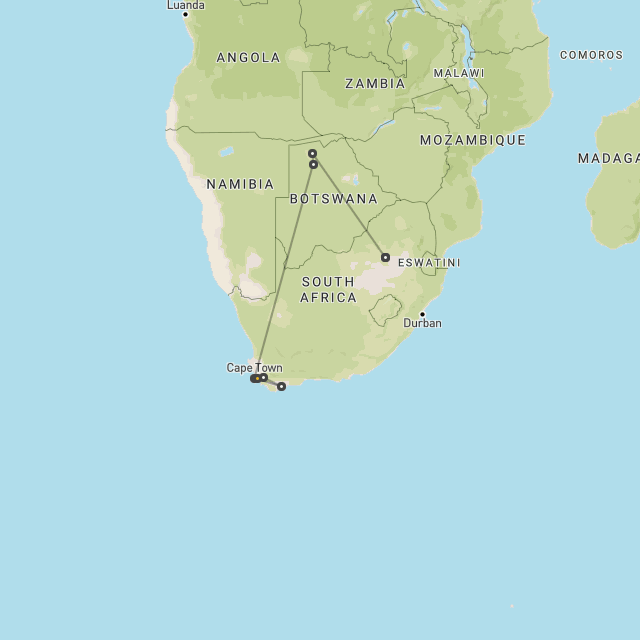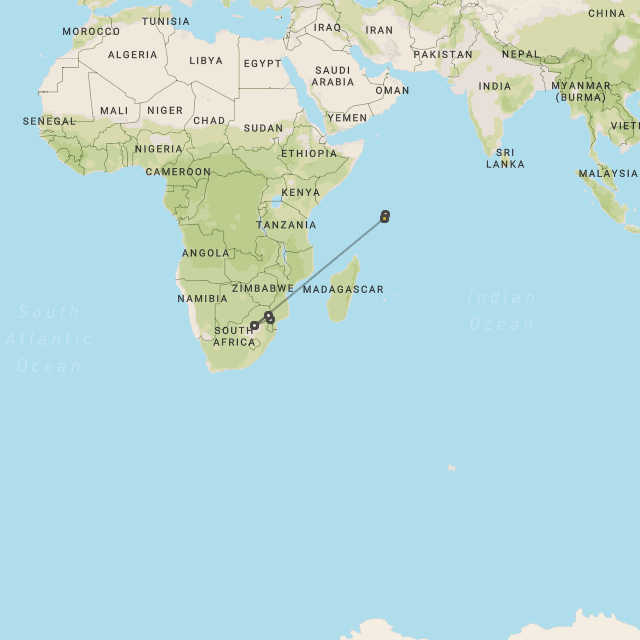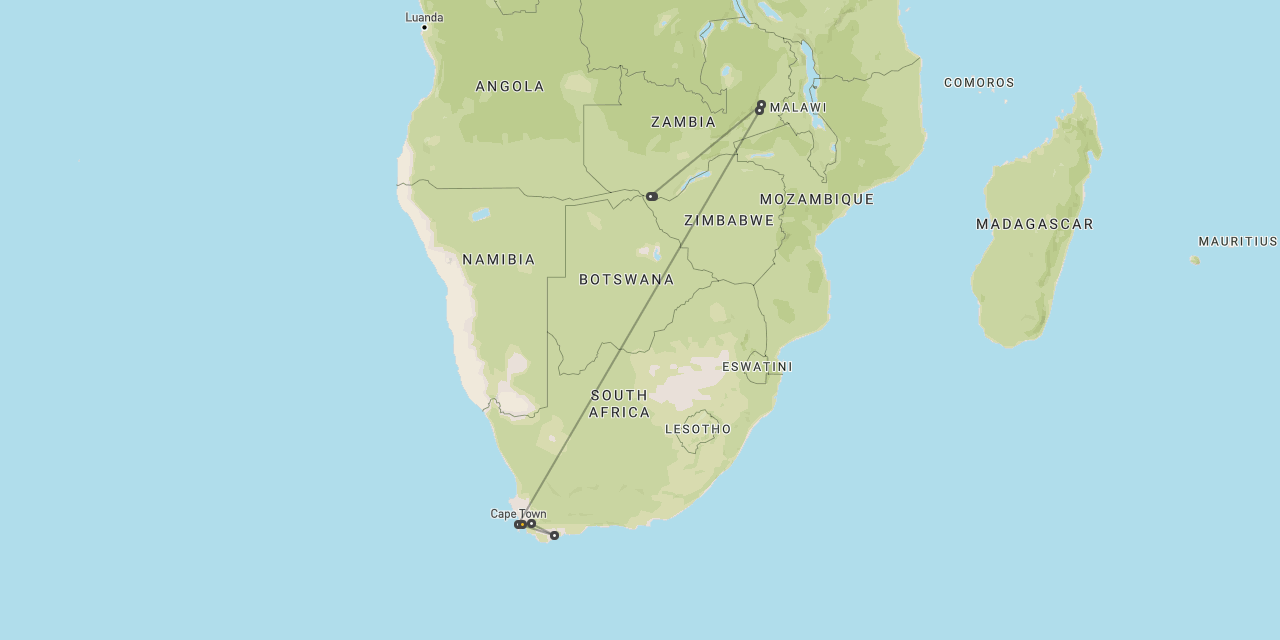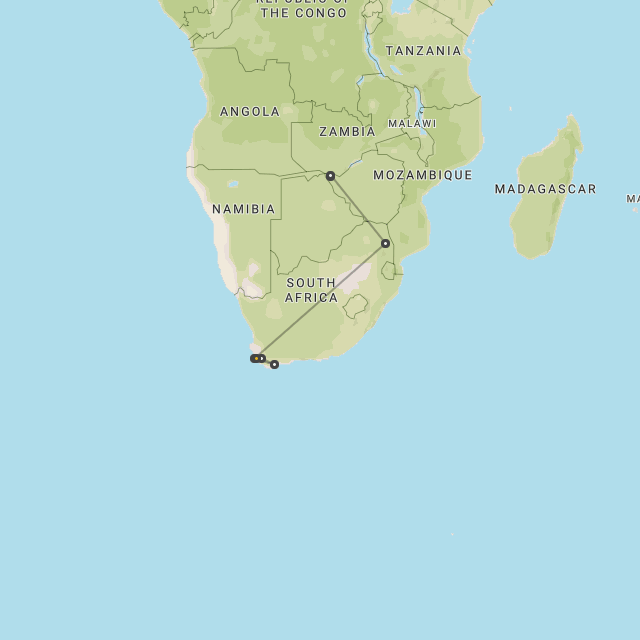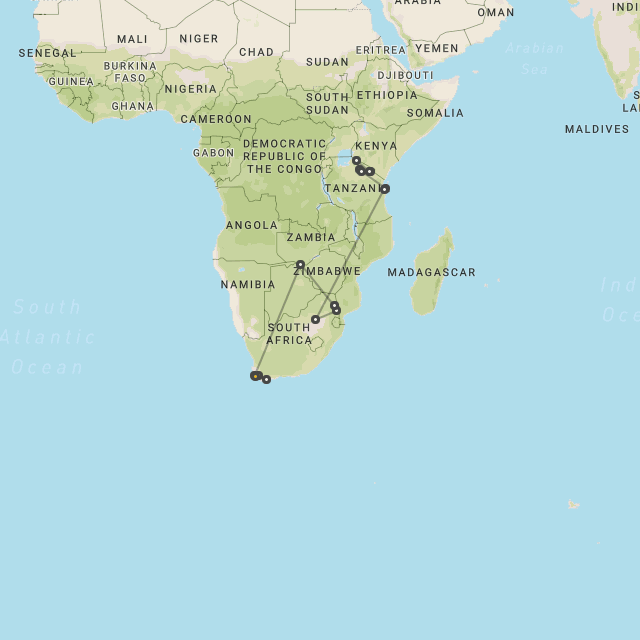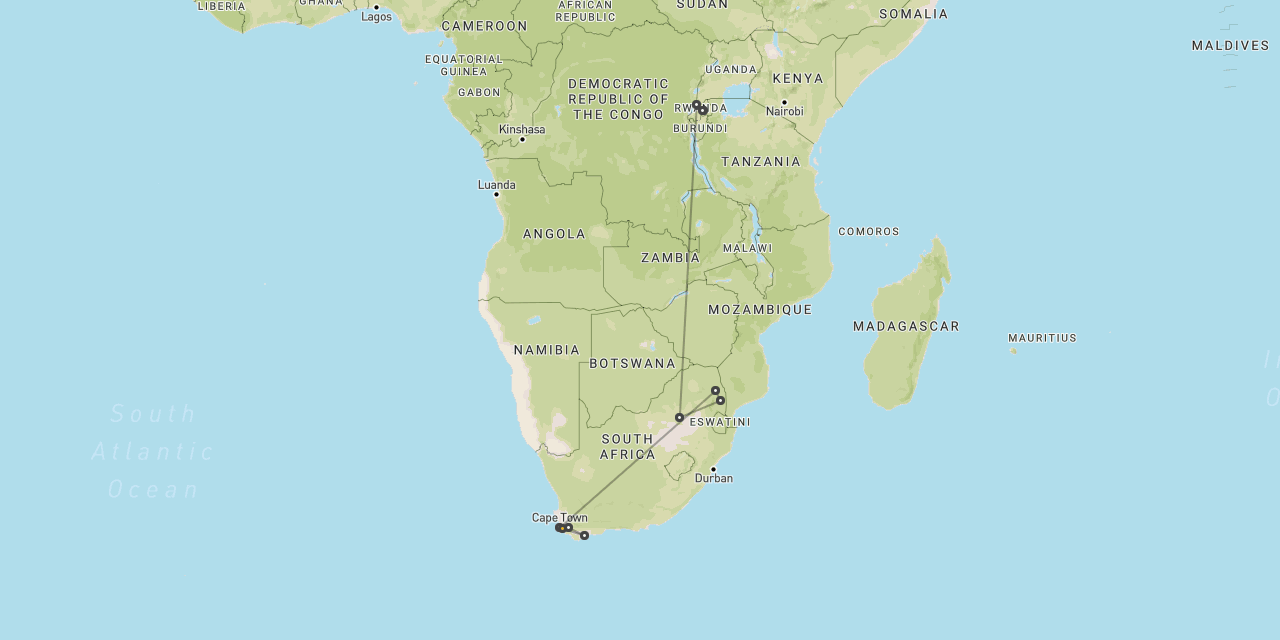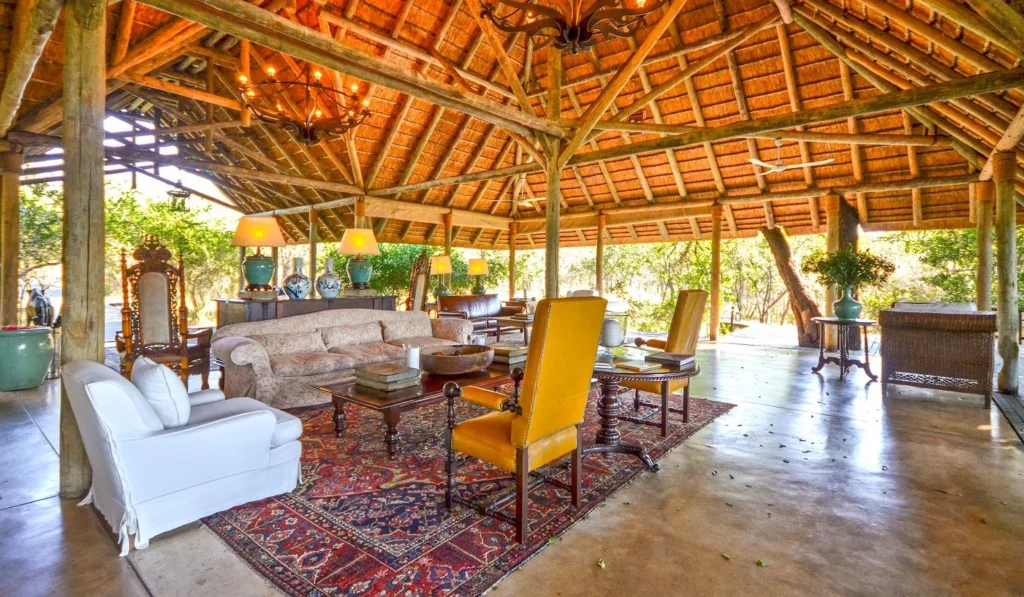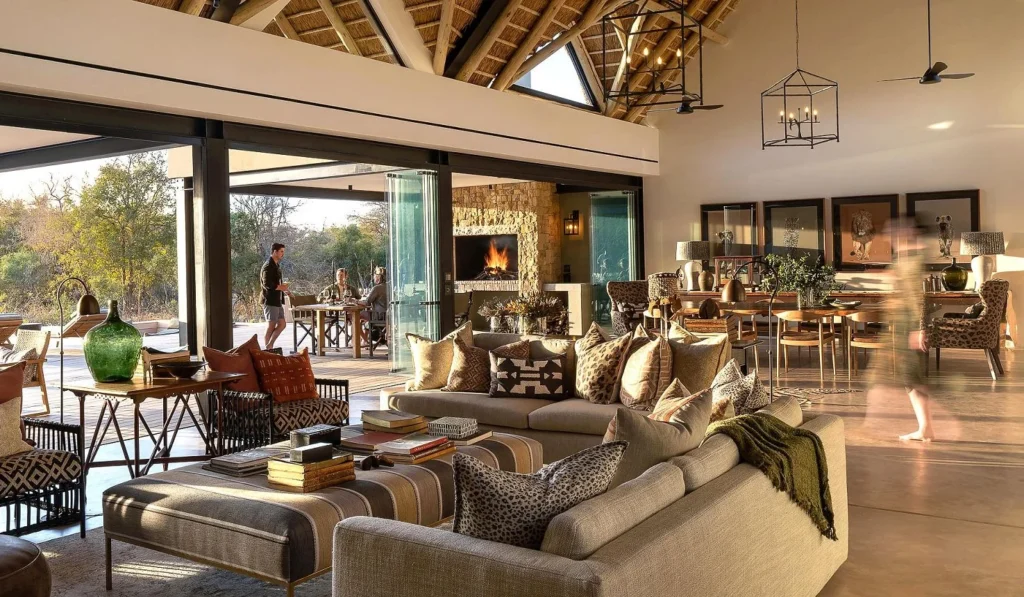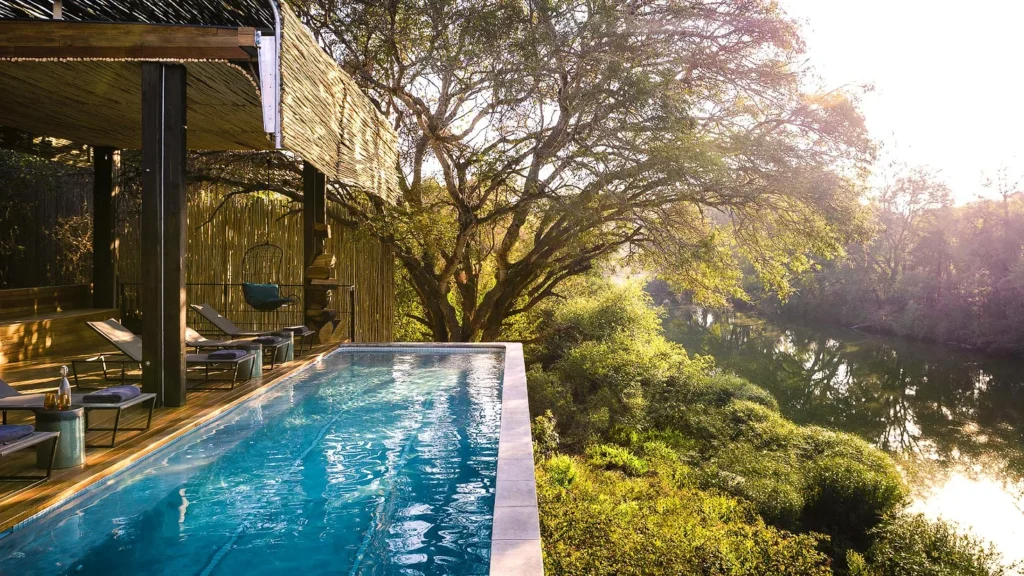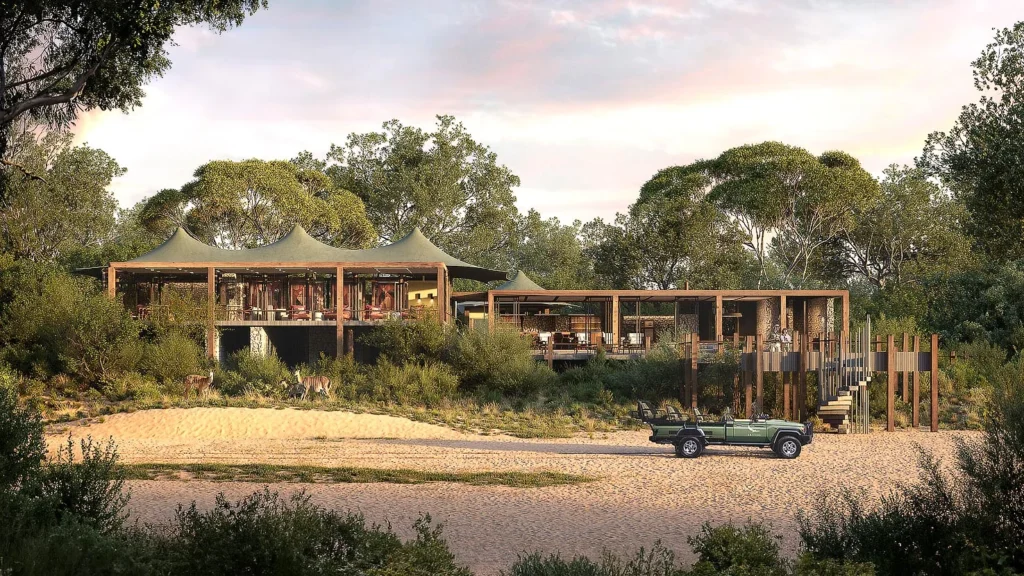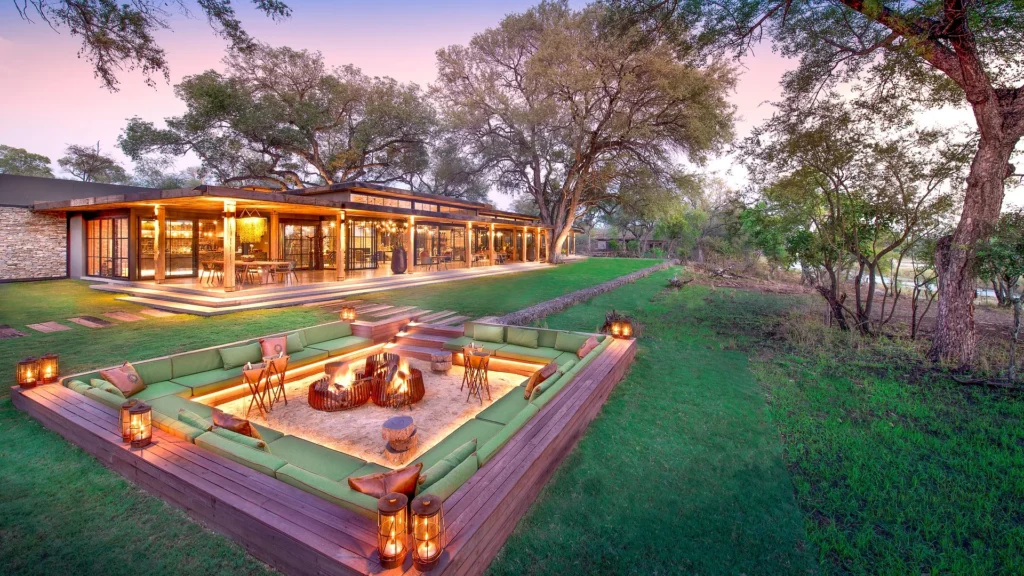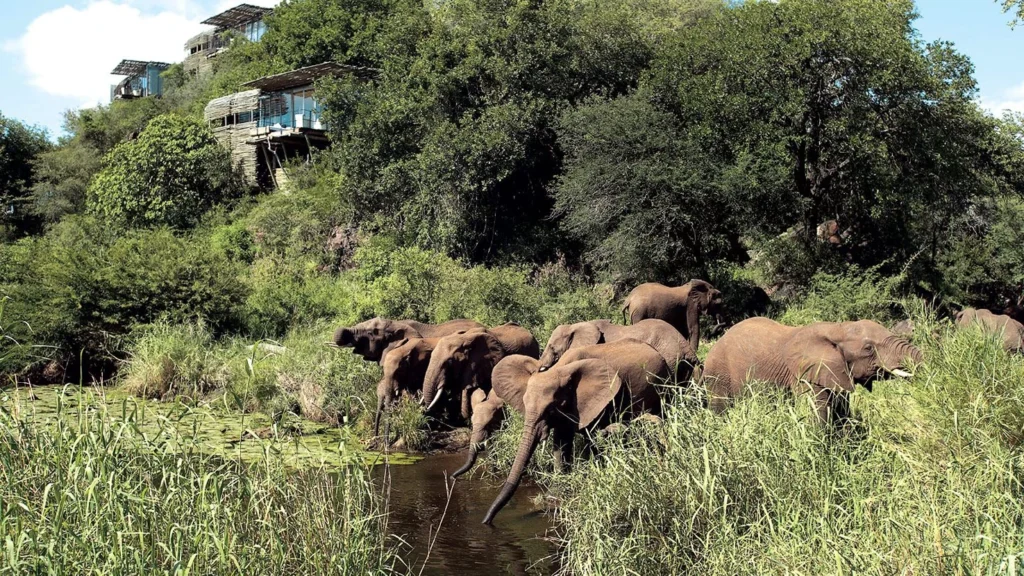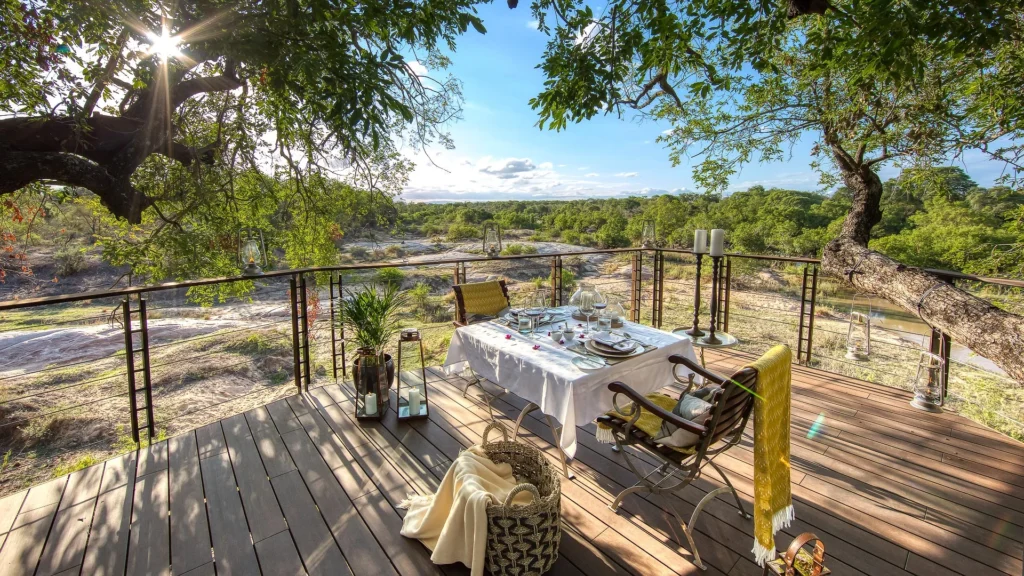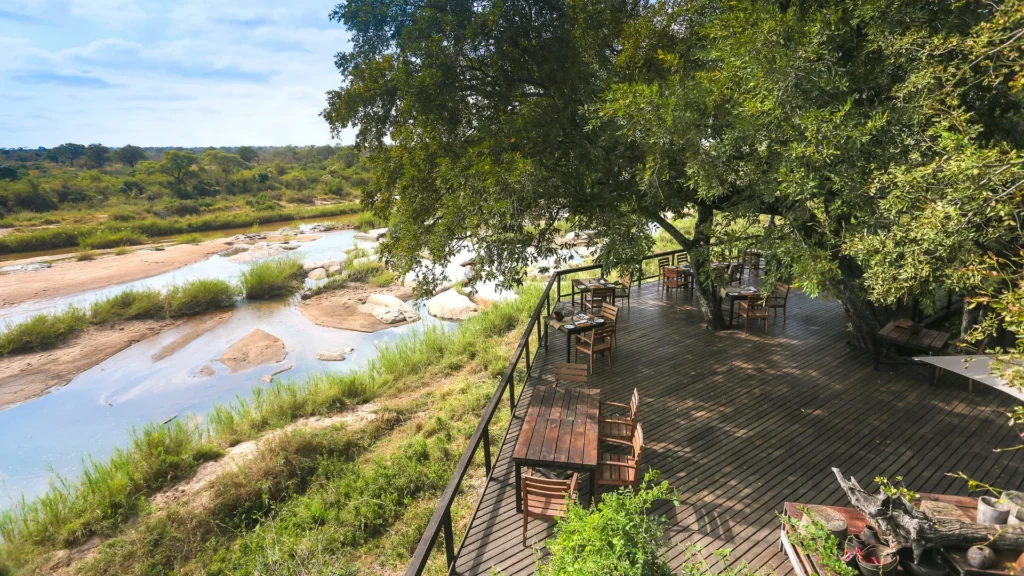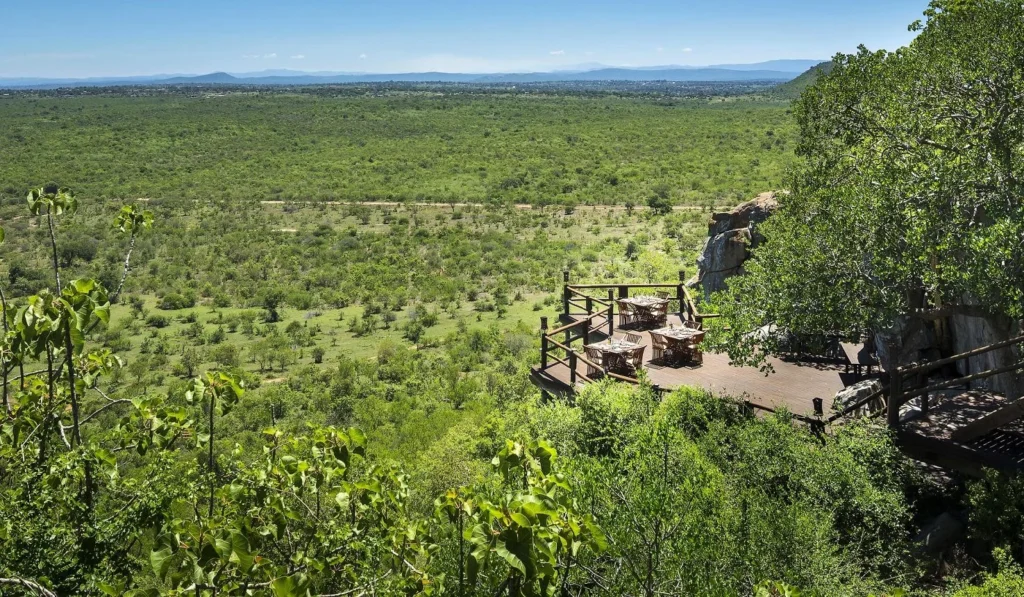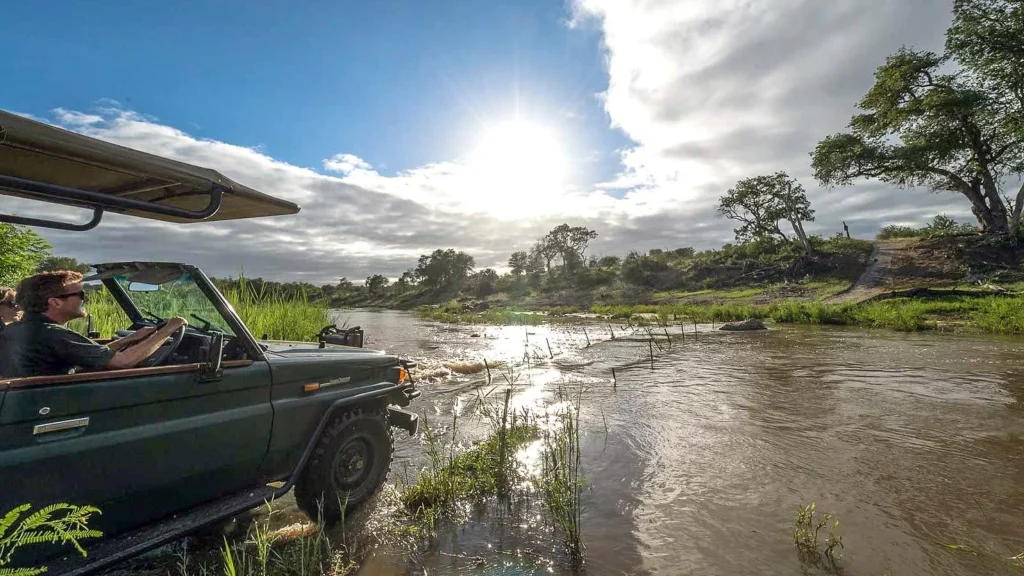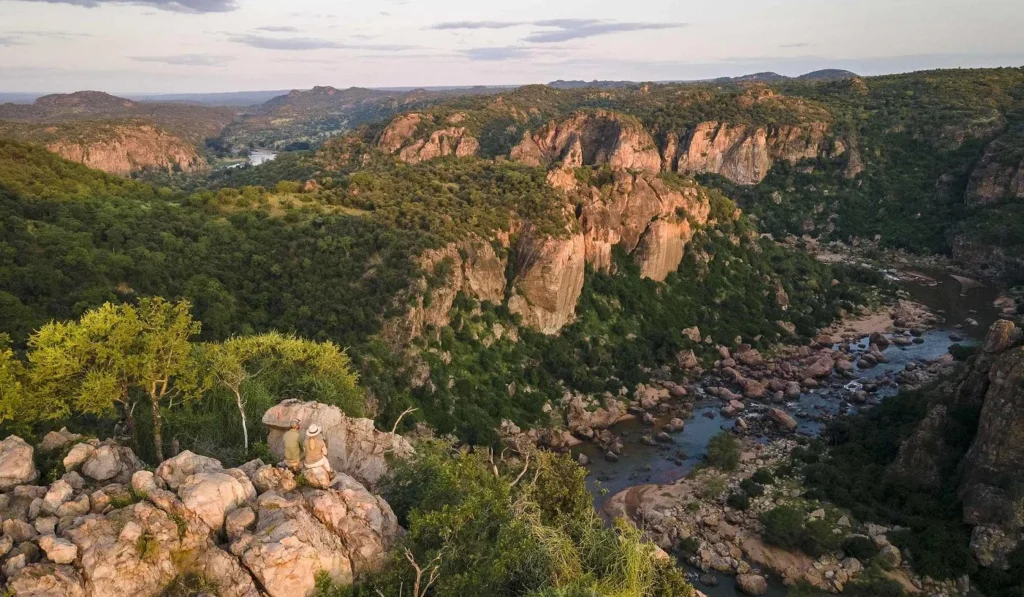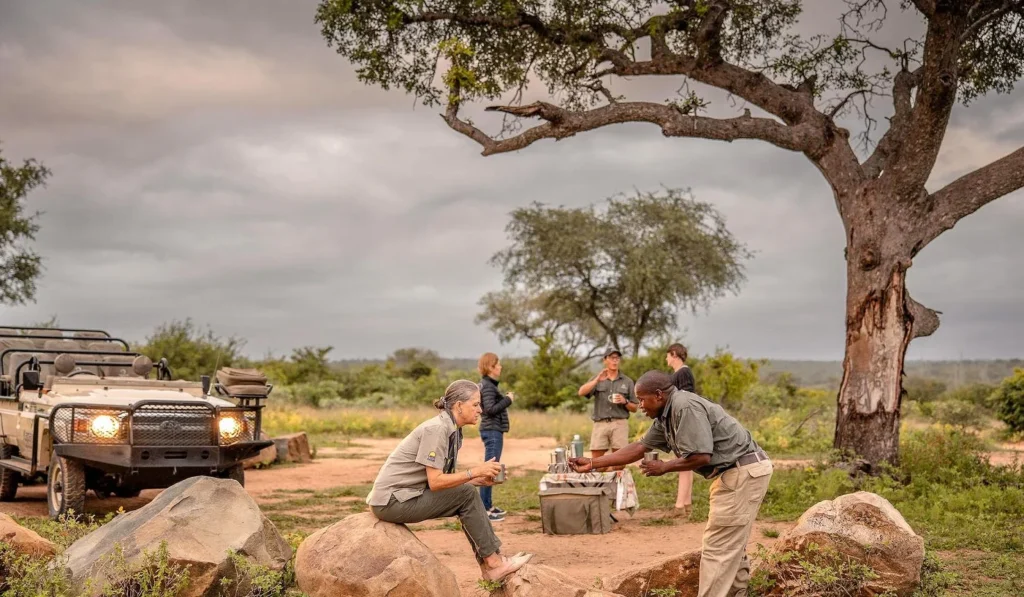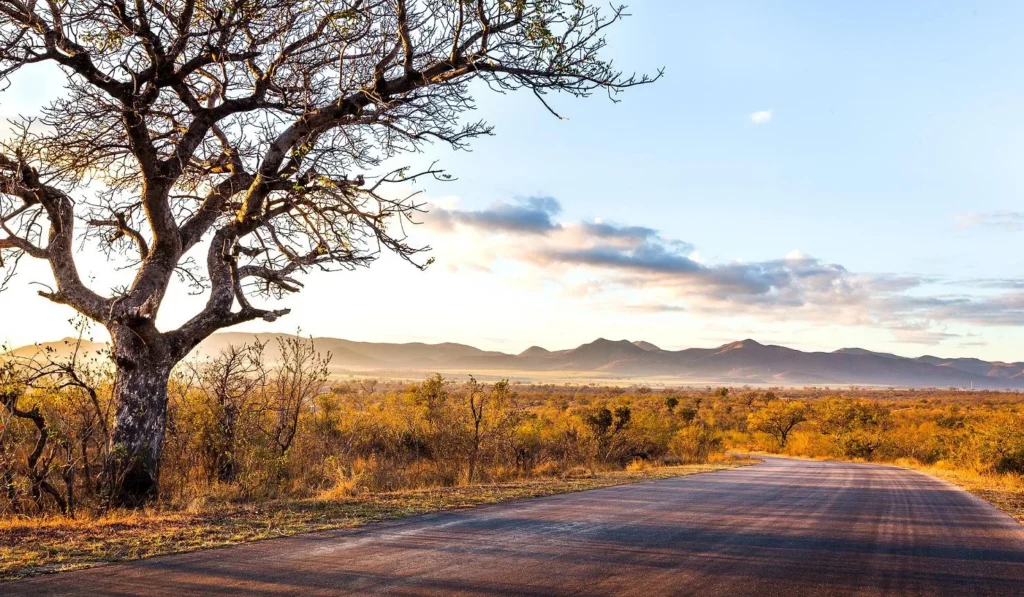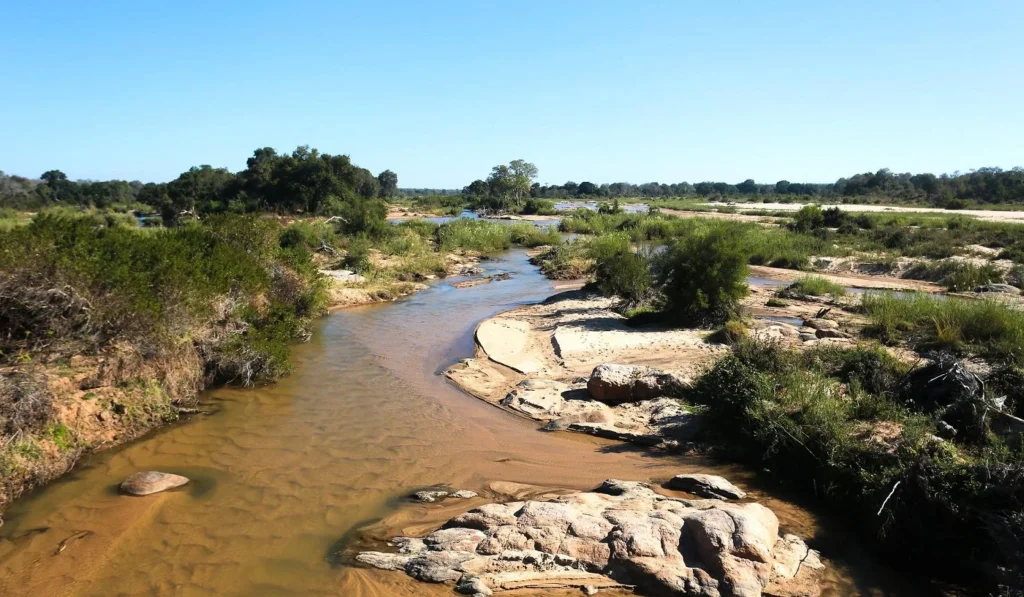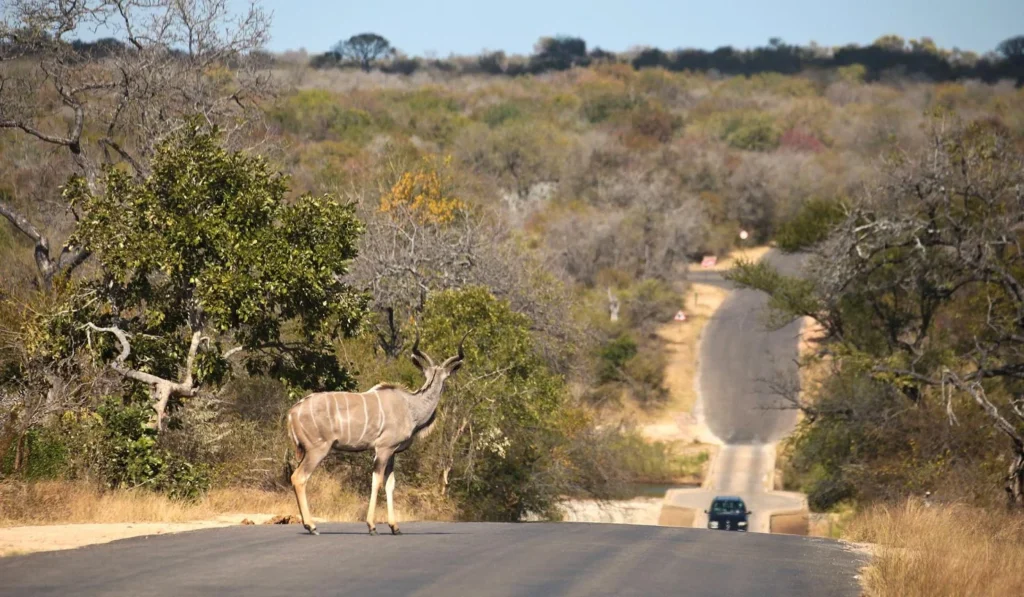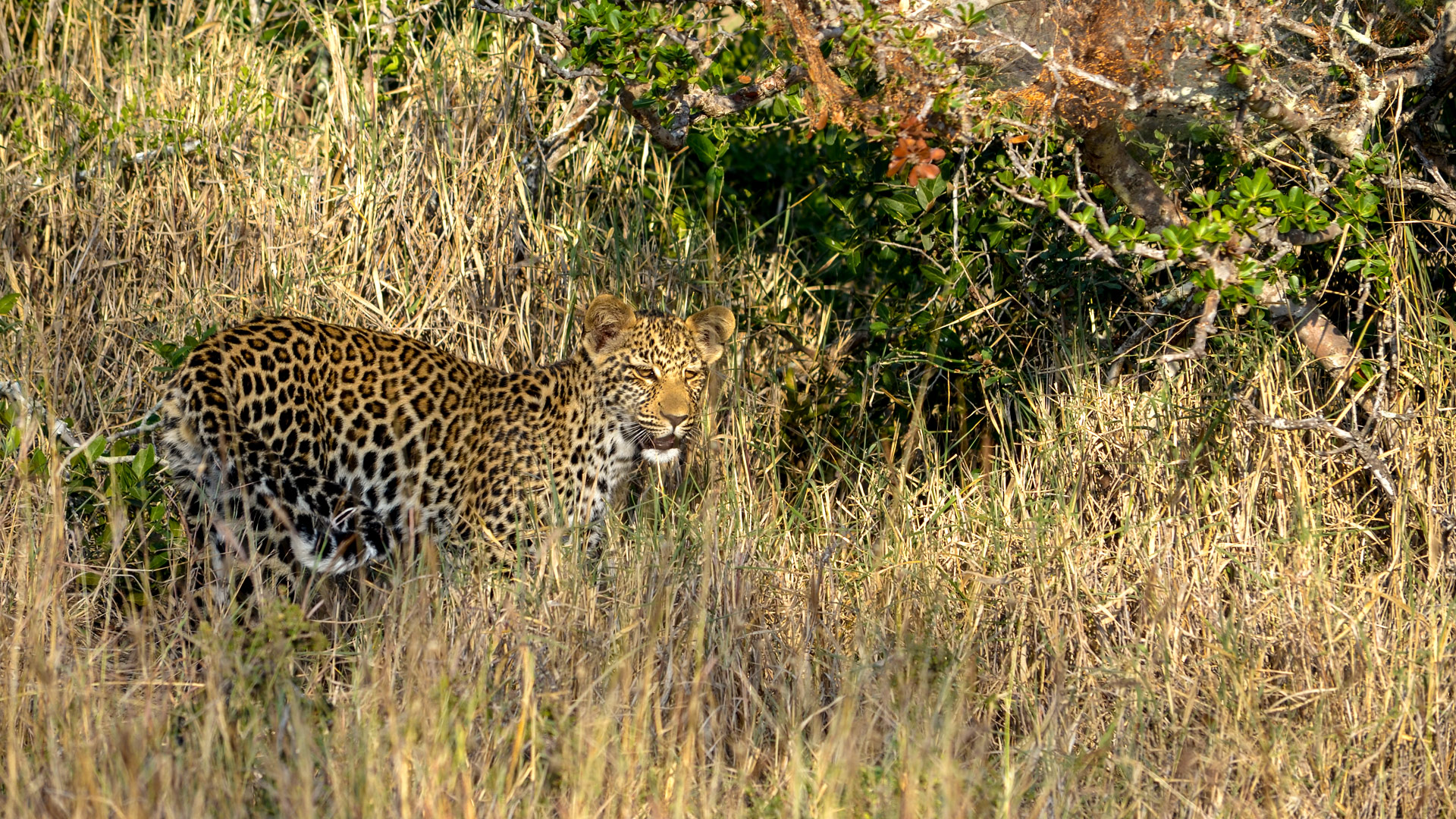
Safari to Thornybush
Thornybush
is a small and busy safari area
to the west of Kruger
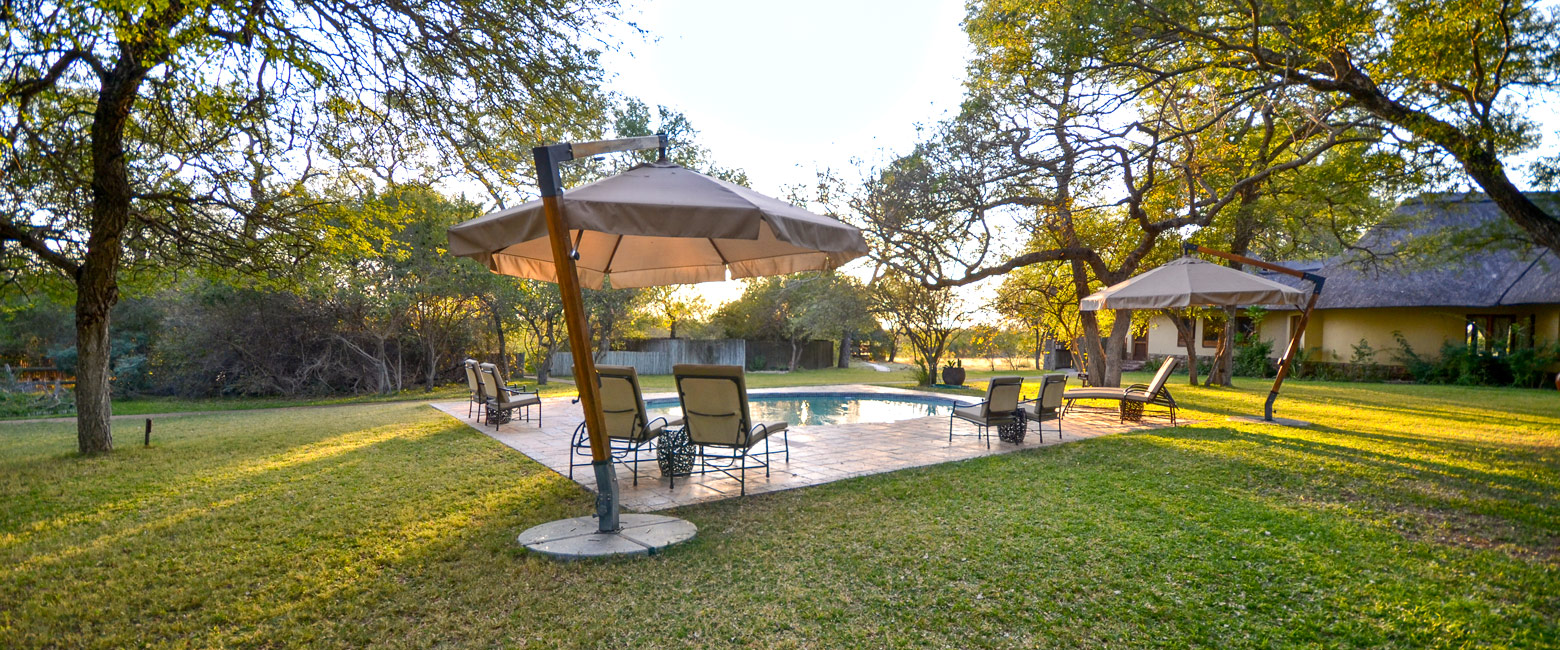
free movement of wildlife to Kruger
Thornybush Reserve is located in the Kruger area of South Africa.
Situated to the west of the greater Kruger area, immediately south of the town of Hoedspruit, Thornybush is a relatively small partially-fenced reserve, comprising approximately 200 square kilometres of gently undulating Lowveld acacia scrub, permeated by a network of small seasonal streams and set against the distant backdrop of the Mpumalanga Drakensberg escarpment.
It contains a full range of animals and wildlife viewing is good year round.
Although the reserve is fenced, the eastern boundary was dismantled in 2017 to allow free movement of wildlife between here and the main national park, via the intermediate Timbavati Reserve.
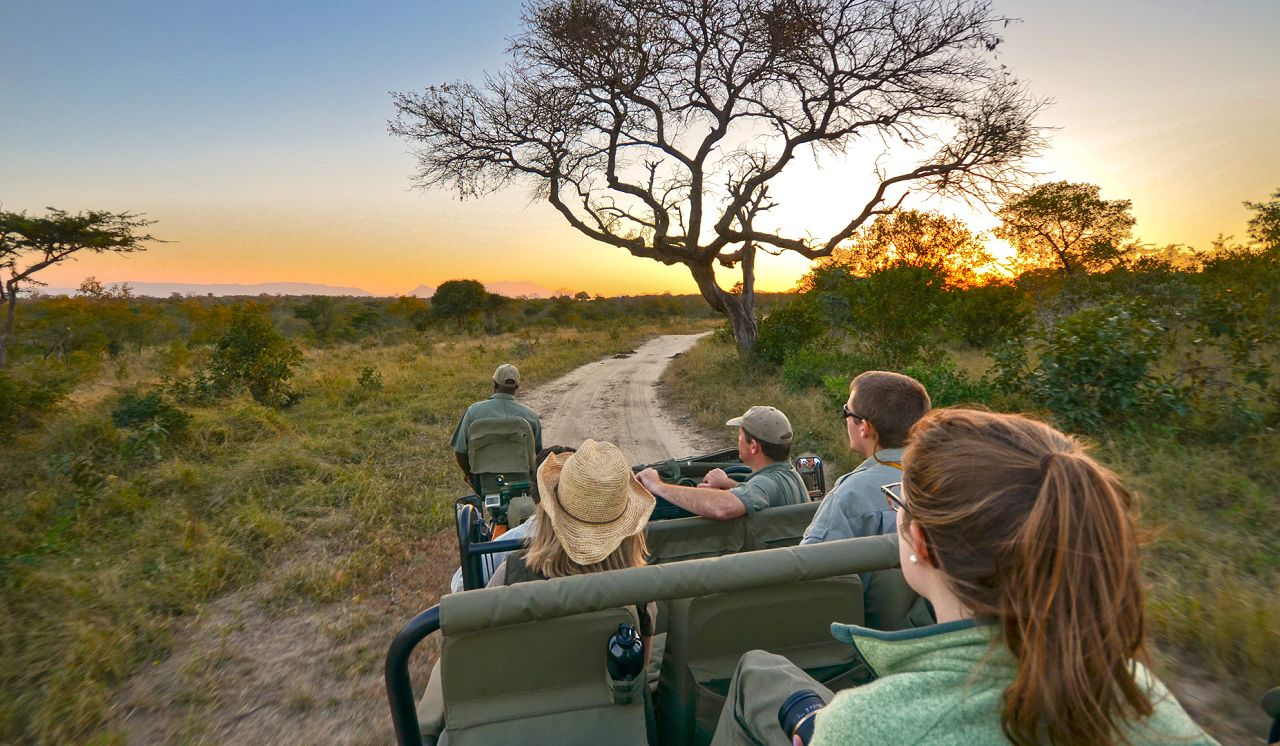
Gallery
Map
The lodges on the Thornybush Reserve are significantly lower cost than those on the better known Sabi Sand area nearby. However, we tend to include this area in trips relatively rarely, mainly due to the high lodge density.
The usual stay duration is 2-4 nights.
Seasonality
The best time to visit Kruger is generally considered to be the May-Oct dry season, but (surprisingly) the reserve remains popular year round.
Safari in the Kruger area is much more seasonal than most people would lead you to believe. Trip planning is complicated by the fact that the seasons here are almost diametrically opposite to those down in Cape Town (with which the area is most commonly combined in trips).
Dry winter : Jun/Sep
This period is characterised by a cool dry winter which is generally considered to be the best time for wildlife viewing, although day length is relatively short and nights can get very cold. Unfortunately it does coincide with a more conventional cool wet winter in Cape Town.
Hot transition : Oct/Nov
This is the start of the hot wet summer. Wildlife viewing is usually very strong, but temperatures and humidities can become uncomfortably high in advance of the first rains, which usually arrive mid November to cool things down. This coincides with a usually pleasant spring season in Cape Town. October therefore represents an interesting compromise month.
Wet summer : Dec/Mar
This period is characterised by a hot wet summer, which is generally considered to be the most challenging time for wildlife viewing, although sightings should remain reliable in the premium areas. Day length is nice and long, but temperatures and humidities can become uncomfortably high and rain can be a major issue. However these potentially adverse conditions happen to coincide with a hot dry summer in Cape Town.
Cool transition : Apr/May
This is a period of transition between the hot wet summer and the cool dry winter, with wildlife viewing continuing to improve as the foliage dies back. Day length, temperatures and humidities are all in the middle of their ranges. The period coincides with autumn/fall in Cape Town, making this perhaps the strongest time of year for the combination.
Where to stay
A total of fifteen lodges utilise the Thornybush Reserve and between them they can handle up to 250 guests, supported by around 40 safari vehicles, making this a relatively busy area.
Thornybush is perhaps best known as being a rather lower cost option compared with the prime areas of the nearby Sabi Sand Reserve and Timbavati Reserve, there really is some decent value to be had amongst the lodges in this area.
lower prices than the premium Sabi Sand area
let us know your thoughts about South Africa
and we will help you create the perfect safari

Extraordinary tailor-made adventures,
from earthy and edgy to easy and extravagant
From around USD 2500 per person, you set the ceiling
Sample Trips
Here are some of our popular trip shapes

Get started on your trip
It’s never too soon to get in touch, we are here to help with every stage of your planning.
Best Lodges
We regularly inspect and photograph all of the the best lodges, to ensure that we always recommend the most suitable options
Key Locations
Take a look around related locations. Click ‘View more’ to explore locations further afield.
Where Next?
Where Next?
We offer trips to dozens of fabulous countries.
Might one of these might be your next great adventure?

Please rotate your screen.








